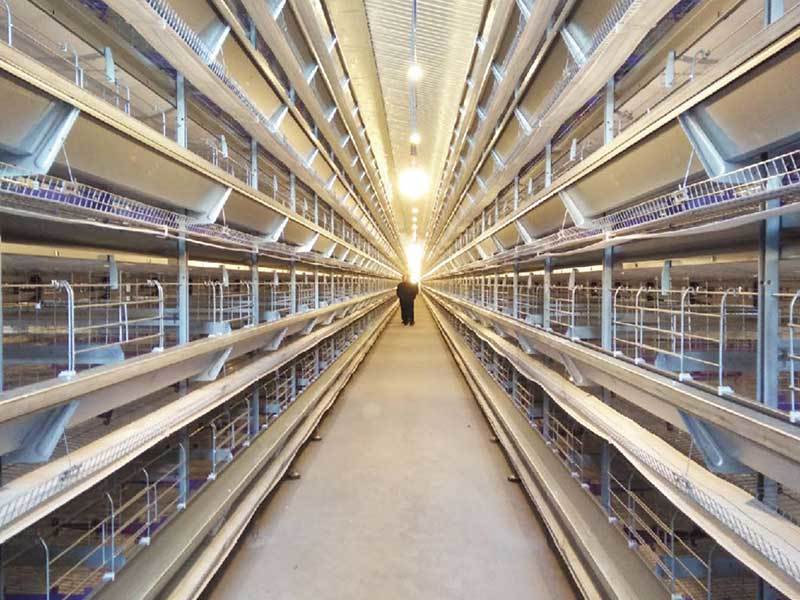High-Tech Egg Grading Equipment for Poultry Industries
Introduction
The poultry industry has undergone significant technological advancements in recent years, particularly in egg processing and grading. High-tech egg grading equipment has revolutionized the way eggs are sorted, cleaned, inspected, and packaged, ensuring efficiency, hygiene, and compliance with food safety standards. Modern egg grading systems integrate automation, artificial intelligence (AI), computer vision, and robotics to enhance accuracy, reduce labor costs, and improve productivity.
This article explores the latest innovations in egg grading technology, including automated sorting, crack detection, weight classification, and packaging solutions. It also discusses the benefits of these systems for poultry farms, processing plants, and consumers.
The Evolution of Egg Grading
Traditionally, egg grading was a manual process involving workers who inspected and sorted eggs based on size, weight, and shell quality. This method was time-consuming, prone to human error, and inefficient for large-scale operations.
With the rise of automation, egg grading machines were introduced to streamline the process. Early models used mechanical sensors to sort eggs by weight and size. However, modern systems now incorporate advanced technologies such as:
- Computer Vision & AI – High-resolution cameras and machine learning algorithms detect defects, cracks, and dirt on eggshells.
- Robotics & Automation – Robotic arms handle eggs gently to minimize breakage and ensure precise placement in packaging.
- IoT & Data Analytics – Real-time monitoring and predictive maintenance optimize machine performance.
Key Features of High-Tech Egg Grading Equipment
1. Automated Egg Collection & Cleaning
Eggs are collected from poultry farms and transported to grading facilities via conveyor belts. Before grading, they undergo a cleaning process where:
- UV Sterilization & Washing – Eggs pass through sanitizing solutions and UV light to eliminate bacteria like Salmonella.
- Drying Systems – High-speed air blowers remove excess moisture to prevent contamination.
2. Computer Vision for Quality Inspection
AI-powered cameras scan each egg at high speed (up to 180,000 eggs per hour) to assess:
- Shell Integrity – Detects micro-cracks, hairline fractures, and weak spots.
- Dirt & Stains – Identifies fecal matter or blood spots for rejection.
- Shape & Color – Ensures uniformity for premium-grade eggs.
Defective eggs are automatically removed from the production line.
3. Weight & Size Grading
Eggs are categorized into different grades (e.g., Small, Medium, Large, Extra Large, Jumbo) using precision load cells. Some systems also measure:
- Yolk Color & Albumen Quality – Spectrophotometers analyze internal quality for specialty markets.
- Candling Technology – LED lights illuminate eggs to check for blood spots or abnormalities.
4. Automated Packaging & Labeling
After grading, eggs are packed into cartons, trays, or bulk containers using robotic systems. Features include:
- Customizable Packaging – Adjustable settings for different carton sizes (6, 12, 30 eggs).
- Smart Labeling – Barcodes, QR codes, and expiration dates are printed automatically.
- Palletizing Robots – Automated stacking for efficient warehouse storage.
5. IoT & Remote Monitoring
Modern egg graders are connected to cloud-based systems for:
- Real-Time Performance Tracking – Operators monitor production rates, error logs, and maintenance alerts.
- Predictive Maintenance – Sensors detect wear and tear, reducing downtime.
- Traceability – Each egg batch is logged for recalls or quality audits.
Benefits of High-Tech Egg Grading Systems
1. Increased Efficiency & Productivity
- Processes thousands of eggs per hour with minimal human intervention.
- Reduces labor costs and dependency on manual sorting.
2. Enhanced Food Safety & Hygiene
- Eliminates human contact, reducing contamination risks.
- UV sterilization and automated washing ensure compliance with food safety regulations.
3. Improved Accuracy & Consistency
- AI-driven inspection reduces grading errors compared to manual methods.
- Ensures uniform egg quality for retail and export markets.
4. Cost Savings & Waste Reduction
- Minimizes egg breakage and rejects defective eggs early in the process.
- Optimizes packaging materials and storage space.
5. Sustainability & Traceability
- Reduces water and energy consumption with efficient cleaning systems.
- Digital records support sustainable farming and supply chain transparency.
Future Trends in Egg Grading Technology
1. AI & Deep Learning for Enhanced Defect Detection
Future systems will use neural networks to identify even smaller defects, such as micro-cracks invisible to the human eye.
2. Blockchain for Supply Chain Transparency
Egg producers can integrate blockchain to track each egg’s journey from farm to consumer, ensuring authenticity and ethical sourcing.
3. Robotics for Gentle Handling
Advanced grippers will mimic human touch to handle fragile eggs more delicately, reducing breakage rates further.
4. Energy-Efficient Designs
Solar-powered and low-energy consumption models will help poultry farms reduce their carbon footprint.
Conclusion
High-tech egg grading equipment has transformed the poultry industry by automating processes that were once labor-intensive and error-prone. With innovations in AI, robotics, and IoT, modern graders ensure efficiency, hygiene, and quality control while meeting global food safety standards.
As technology continues to evolve, future advancements will further enhance precision, sustainability, and traceability in egg production. Poultry farms and processing plants that invest in these systems gain a competitive edge by delivering superior-quality eggs to consumers worldwide.
By adopting smart grading solutions, the poultry industry can achieve higher productivity, lower operational costs, and improved food safety—ensuring a steady supply of fresh, high-quality eggs for the global market.
(Word count: ~2000)

 Catalogue
Catalogue







 Whatsapp
Whatsapp Telefon
Telefon
Izoh
(0)